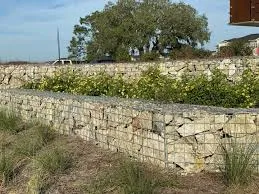-
 Phone:
Phone: -
 Email:
Email:

barbed wire fence
The Unseen Barrier Exploring the Symbolism and Functionality of Barbed Wire Fences
Barbed wire fences have become a permanent fixture in modern society, serving both practical and symbolic purposes. First developed in the late 19th century, barbed wire was originally created as a means to protect agricultural lands, but over time, its applications have diversified to include security measures along borders, prisons, and private properties. As we delve into the history, functionality, and symbolism of barbed wire fences, we unveil layers of meaning that reflect societal values, security, and division.
Historically, barbed wire was introduced in 1873 by Joseph Glidden, who sought to protect open-range cattle farming in the American West. Its design was revolutionary; the sharp barbs made it an effective deterrent against livestock straying from designated areas. This innovation dramatically changed the landscape of agricultural land use, leading to the establishment of more controlled farming practices. With the proliferation of barbed wire, sprawling ranches were fenced in, giving rise to conflicts over land ownership and usage, a theme that resonates in modern discussions about property rights.
Functionally, barbed wire fences serve to define boundaries and provide security. They are employed across various landscapes—from rural farms to urban centers. In many cases, barbed wire represents an attempt to create safety against external threats. In the context of prisons, for instance, it is used to prevent escape and ensure that inmates remain within designated boundaries. Similarly, along national borders, barbed wire fences symbolize a nation’s efforts to control immigration and protect its sovereignty. Here, it transforms from a mere agricultural tool into a powerful emblem of nationalism and protectionism.
barbed wire fence

However, the deployment of barbed wire also raises ethical questions concerning its implications. In areas affected by political conflict or environmental crises, barbed wire fences can signify division rather than security. They can represent the physical barriers between nations and peoples, often resulting in separation and isolation. The increasing use of barbed wire along borders, especially in Europe and the United States, has sparked debates about the ethics of immigration policies and the humanitarian implications of such divisive measures. For many, barbed wire fences symbolize a reluctance to engage with “the other” and a prioritization of state interests over human dignity.
On a more psychological level, barbed wire fences can evoke feelings of fear and oppression. Whether it is the sharp, impending threat of the barbs themselves or the mere sight of a fence designed to keep people out, these structures can invoke a sense of unease. They serve as a reminder of the barriers we construct—both physical and metaphorical—in our lives. On a personal level, every individual erects their own barbed wire fences, often guarding their emotions, memories, and experiences from close scrutiny. In this sense, barbed wire becomes a universal metaphor for protection—a resolute line drawn around what we value most.
Moreover, the dual nature of barbed wire is perhaps best illustrated by its use in militaristic contexts. Barbed wire has often been employed in warfare, marking out no-man’s land and serving as a physical reminder of conflict. It is hauntingly symbolic of the struggles and grievances that persist between opposing factions throughout history. As such, its presence can evoke a myriad of emotions, from fear and anger to resilience and hope.
In conclusion, barbed wire fences are far more than utilitarian constructs. They represent complex human emotions, societal divisions, and historical contexts. As we navigate a world increasingly defined by barriers—both physical and ideological—it is essential to reflect on the messages these fences communicate. Whether serving as a protective measure or a symbol of division, barbed wire is a powerful reminder of the boundaries we construct to safeguard our interests, often at the expense of understanding and connection. In exploring the significance of barbed wire, we are invited to confront our own boundaries and consider how we can foster inclusivity in a world that so readily builds walls.
-
Wire Mesh for Every Need: A Practical SolutionNewsJul.25,2025
-
Steel Fences: Durable, Secure, and Stylish OptionsNewsJul.25,2025
-
Roll Top Fencing: A Smart Solution for Safety and SecurityNewsJul.25,2025
-
Cattle Farm Fencing Solutions for Maximum SecurityNewsJul.25,2025
-
Affordable Iron Binding Wire SolutionsNewsJul.25,2025
-
Affordable Galvanized Wire SolutionsNewsJul.25,2025
-
Wire Hanger Recycling IdeasNewsJul.25,2025








